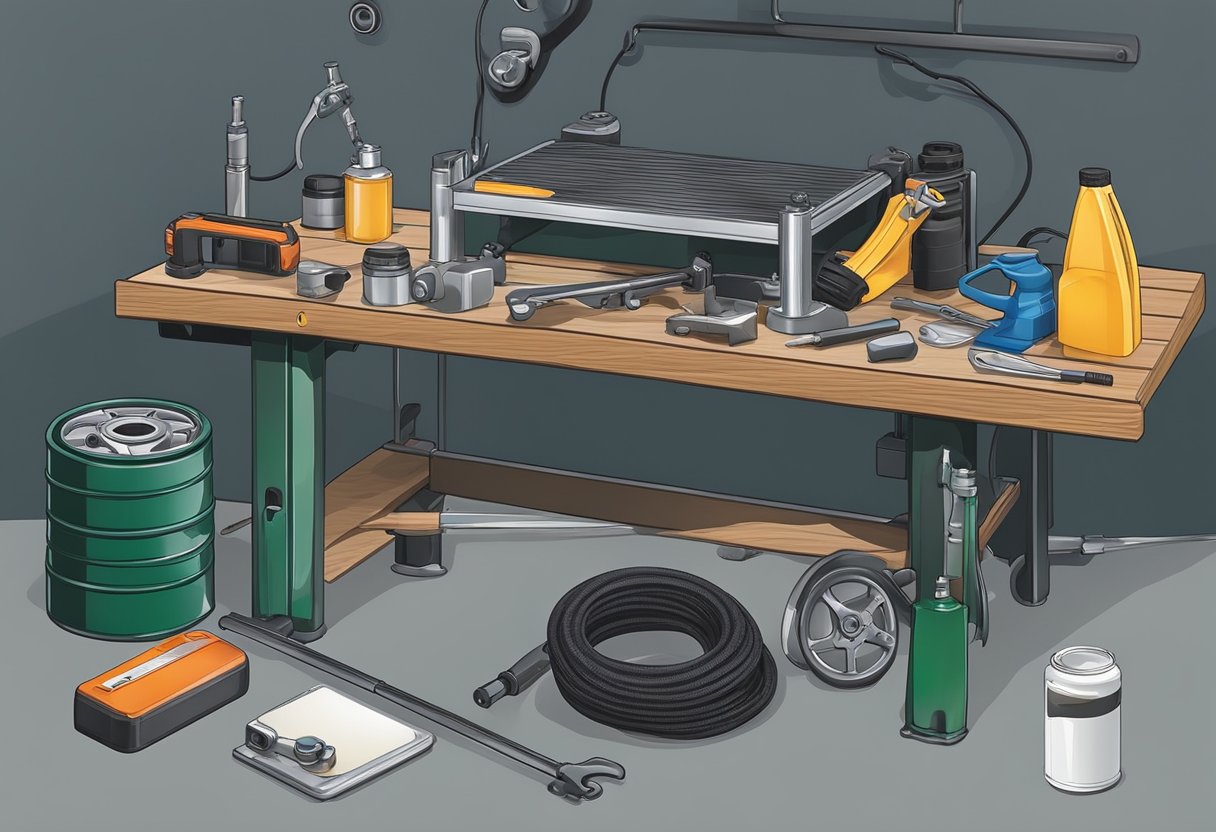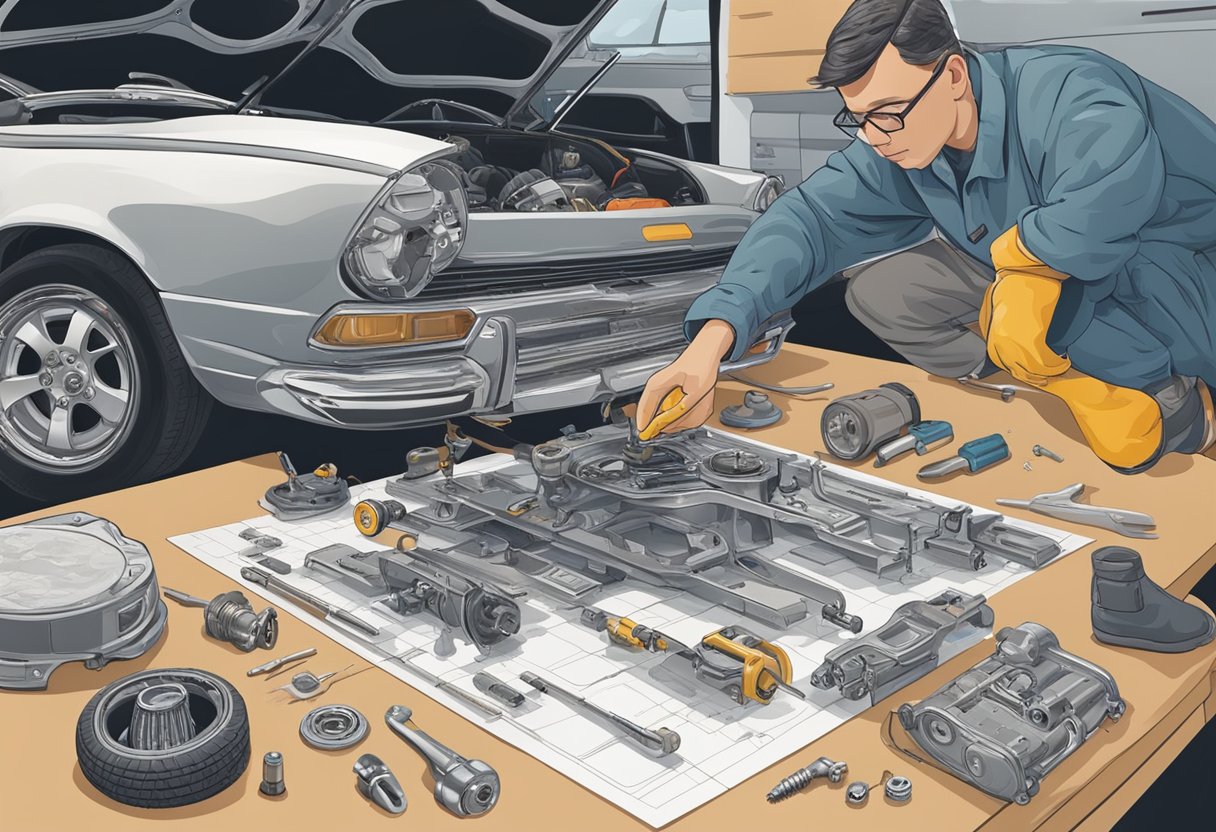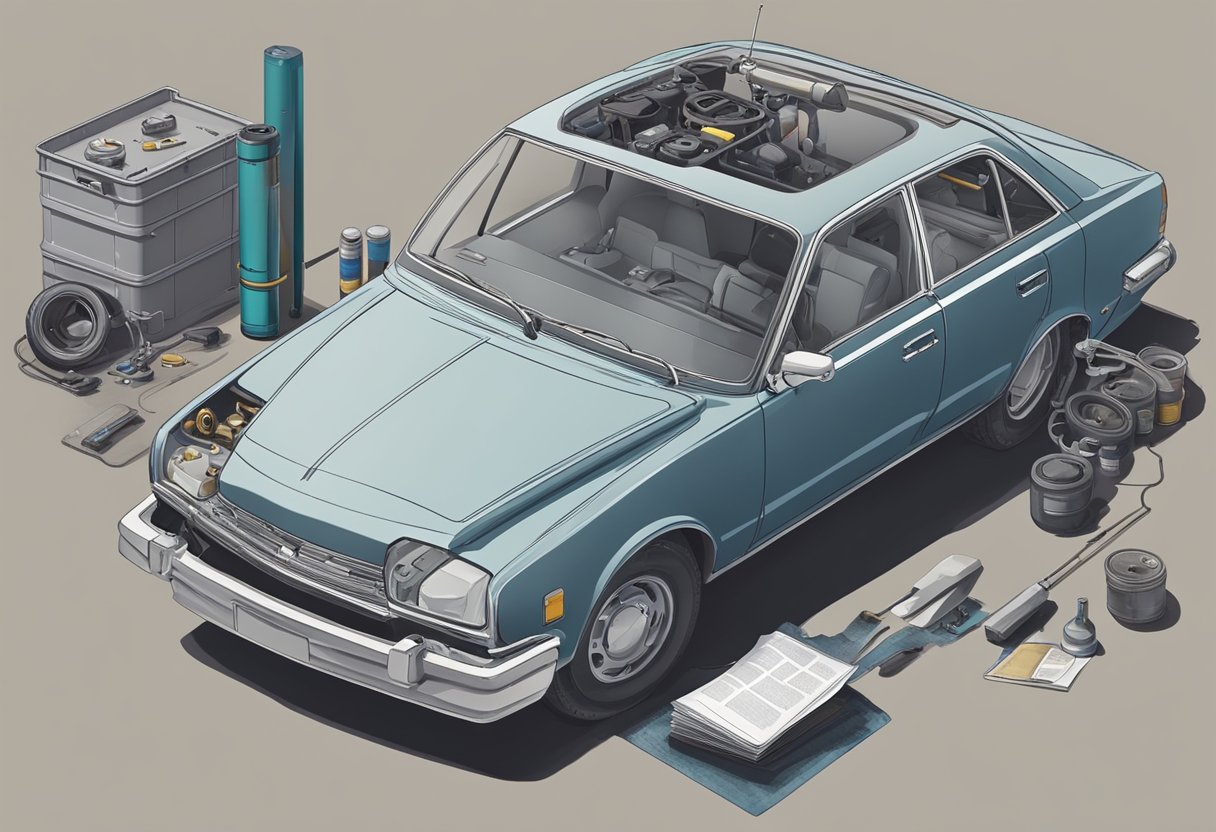If you’re a car owner, you know that transmission leaks can be a common, yet frustrating, issue. Not only can they lead to performance problems, but they can also be expensive to fix if you take your car to a mechanic. Fortunately, many transmission leaks can be fixed with a DIY approach, saving you time and money. In this article, we’ll provide you with a DIY guide to fixing transmission leaks, so you can get back on the road with confidence.
Before we dive into the steps for fixing transmission leaks, it’s important to understand what causes them. Transmission fluid leaks can occur for a variety of reasons, including worn seals, damaged cooling lines, and a failing torque converter. The most common cause of transmission leaks is a faulty transmission pan gasket or drain plug. If you notice a puddle of automatic transmission fluid under your car, low fluid levels, or transmission slippage, it’s likely that you have a transmission leak that needs to be addressed. With the knowledge of what causes transmission leaks, you can take the necessary steps to fix the problem.
In this DIY guide to fixing transmission leaks, we’ll provide you with step-by-step instructions for identifying the source of the leak and repairing it yourself. By following our guide, you’ll gain the knowledge and confidence to tackle this common car repair issue on your own. With a little bit of knowledge and the right tools, you’ll be able to fix your transmission leak and get back on the road in no time.
Understanding Transmission Leaks
Transmission leaks can be a common issue for car owners. Knowing how to identify the signs of a leak and the common causes can help you fix the problem before it becomes more serious. In this section, we will discuss the common causes of transmission leaks and how to identify transmission leak signs.
Common Causes of Transmission Leaks
There are several common causes of transmission leaks. These include:
-
Worn or Damaged Seals and Gaskets: Seals and gaskets are used to prevent fluid from leaking out of the transmission. Over time, these can wear down or become damaged, causing leaks.
-
Loose or Damaged Transmission Pan: The transmission pan holds the transmission fluid. If it becomes loose or damaged, fluid can leak out.
-
Cracked Torque Converter: The torque converter is responsible for transferring power from the engine to the transmission. If it becomes cracked, fluid can leak out.
-
Damaged Transmission Cooler Lines: The transmission cooler lines are responsible for keeping the transmission fluid cool. If they become damaged, fluid can leak out.
Identifying Transmission Leak Signs
Identifying the signs of a transmission leak can help you fix the issue before it becomes more serious. Some common signs of a transmission leak include:
-
Puddles Underneath Your Car: If you notice puddles of fluid underneath your car, this could be a sign of a transmission leak.
-
Burning Odor: If you notice a burning odor coming from your car, this could be a sign that the transmission fluid is leaking and burning.
-
Color of Fluid: Transmission fluid is typically bright red in color. If you notice that the fluid is brown or has a burnt smell, this could be a sign of a transmission leak.
In the next section, we will discuss how to fix a transmission leak on your own.
Preparation for Repair
Before you start fixing your transmission leak, it is important to prepare yourself and your workspace. This will ensure that you have everything you need and that you can work safely and efficiently. In this section, we will discuss the tools and materials you need as well as some safety precautions you should take.
Tools and Materials Needed
Here are the tools and materials you will need to fix your transmission leak:
| Tools | Materials |
|---|---|
| Jack and jack stands | Transmission fluid |
| Wrenches | Transmission seal |
| Socket set | Drip pan |
| Screwdrivers | Rags |
| Pliers | Gloves |
Make sure you have all the tools and materials listed above before you start working on your transmission. If you are missing any of these items, you will not be able to complete the repair.
Safety Precautions
Working on your transmission can be dangerous, so it is important to take some safety precautions. Here are some things you should do before you start working:
- Make sure your car is on a level surface and that the parking brake is engaged.
- Wear gloves and safety glasses to protect your hands and eyes from transmission fluid.
- Use jack stands to support your car while you work on it.
- Keep a fire extinguisher nearby in case of an emergency.
- If you are not confident in your ability to fix your transmission, it is best to take your car to a mechanic.
By following these safety precautions, you can reduce the risk of injury or damage to your car. Remember, safety should always come first when working on your car.
Now that you have your tools and materials and have taken some safety precautions, you are ready to start fixing your transmission leak.
Step-by-Step Repair Guide
Fixing transmission leaks can be a daunting task, but with the right tools and knowledge, it can be done without the need for professional help. Here is a step-by-step guide to help you fix transmission leaks on your own.
Checking Fluid Level and Quality
The first step to repair a transmission leak is to check the fluid level and quality. Start by parking your vehicle on a level surface and turning the engine off. Locate the transmission dipstick, which is usually located near the engine. Pull the dipstick out and wipe it clean with a lint-free cloth. Reinsert the dipstick and pull it out again. Check the fluid level and quality against the markings on the dipstick. If the fluid level is low or the quality is poor, you may need to add or replace the transmission fluid.
Replacing Damaged Seals and Gaskets
If you have determined that the fluid level and quality are not the cause of the leak, the next step is to check for damaged seals and gaskets. The most common cause of transmission leaks is damaged seals and gaskets. To replace the seals and gaskets, you will need to remove the transmission pan. Start by draining the fluid from the transmission pan. Remove the bolts that hold the transmission pan in place. Carefully remove the pan, taking care not to damage the gasket. Remove the old gasket and clean the transmission pan and mating surface. Install the new gasket and reattach the transmission pan. Refill the transmission with fluid.
Addressing Cooling Lines Issues
Another common cause of transmission leaks is damaged cooling lines. If the cooling lines are damaged, they will need to be replaced. Start by locating the cooling lines. Carefully inspect the lines for damage or leaks. If the lines are damaged, remove them and replace them with new ones. Refill the transmission with fluid.
By following these simple steps, you can diagnose and fix transmission leaks on your own. However, if you are unsure about any of the steps involved, it is always best to seek professional help.
-Is there any overlap in the tools or techniques used for fixing transmission leaks and replacing an engine splash shield?
Yes, there can be an overlap in the tools and techniques used for fixing transmission leaks and replacing an engine splash shield. However, the stepbystep engine splash shield replacement may require additional protective gear and a specific wrench size for removal.
Can Fixing Car Battery Cables Help Prevent Transmission Leaks?
When dealing with transmission leaks, it’s important to ensure that all components of the car are in good working condition. This includes checking the car battery cable connections to prevent any electrical issues that could potentially lead to transmission problems. Follow the car battery cable replacement instructions carefully to maintain a well-functioning vehicle.
Preventing Future Transmission Leaks
To avoid future transmission leaks, you should maintain your transmission system regularly and take preventive measures. Here are some tips to help you prevent future transmission leaks.
Regular Maintenance Tips
Regular maintenance is essential to keep your transmission system in good condition. You should check the transmission fluid level regularly and change it as recommended by the manufacturer. You can refer to the owner’s manual for the recommended frequency of changing the transmission fluid.
Regularly inspecting the transmission system for leaks is also important. You can spot leaks by checking the ground where you park your vehicle. Fresh transmission fluid is usually dyed red, but it can also be green, amber, or even have a bluish tint. If you notice any drops on the ground, it’s a good idea to get your vehicle inspected by a professional.
When to Seek Professional Assistance
If you notice any signs of transmission leaks, such as low transmission fluid level, burnt smell, or difficulty shifting gears, you should seek professional assistance immediately. Ignoring these signs can lead to more severe problems and costly repairs.
Professional mechanics can diagnose the problem and fix it before it becomes worse. They have the necessary tools and expertise to identify the source of the leak and repair it. Attempting to fix transmission leaks by yourself can be dangerous and lead to more severe problems.
In conclusion, regular maintenance and preventive measures can help you avoid future transmission leaks. If you notice any signs of transmission leaks, seek professional assistance immediately.
Troubleshooting and FAQs
Addressing Common Repair Challenges
When it comes to fixing transmission leaks, there are several common challenges you may face. One of the most common issues is trouble shifting gears. If you notice that your vehicle is having difficulty shifting gears or is slipping gears, it could be a sign of a transmission leak. In this case, you will need to identify the source of the leak and replace any damaged components.
Another common issue is overheating. If your transmission is overheating, it could be due to a lack of fluid or a damaged component. In some cases, extensive damage may have occurred, requiring a full transmission rebuild or replacement.
Repair costs can also be a concern, as they can vary widely depending on the extent of the damage and the type of repair required. In general, minor leaks can be fixed relatively inexpensively, while more extensive damage can be much more costly.
Frequently Asked Questions
Here are some frequently asked questions about fixing transmission leaks:
How can I tell if my car has a transmission leak?
One of the most common signs of a transmission leak is a puddle of fluid underneath your vehicle. You may also notice a burning smell or difficulty shifting gears.
Can I fix a transmission leak myself?
While it is possible to fix a transmission leak yourself, it can be a challenging and time-consuming process. It is generally recommended that you seek the assistance of a professional mechanic to ensure that the repair is done correctly.
How much does it cost to fix a transmission leak?
The cost of fixing a transmission leak can vary widely depending on the extent of the damage and the type of repair required. Minor leaks can be fixed relatively inexpensively, while more extensive damage can be much more costly.
How long does it take to fix a transmission leak?
The length of time it takes to fix a transmission leak depends on the extent of the damage and the type of repair required. Minor leaks can often be fixed in a matter of hours, while more extensive damage may require several days to repair.
As an Amazon Associate we earn from qualifying purchases.















